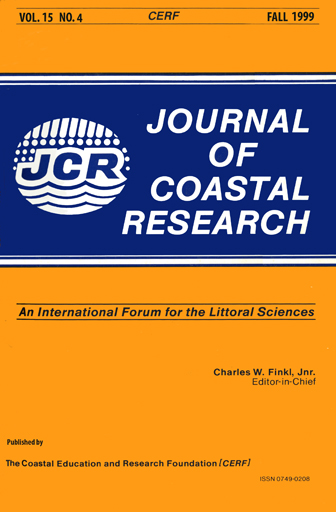Infiltration and Moisture Movement in Coastal Sand Dunes, Studland, Dorset, U.K.: Preliminary Results
Keywords:
Coastal dunes, subsurface moisture regimes, vadose hydrology.Abstract
This paper reports the initial findings from a study of soil moisture within a series of three unlithified dune ridges at Studland, Dorset, on the southern coast of England. The infiltration and movement of moisture was monitored at each dune crest, slack and mid position on windward and leeward flanks, using capacitance probe technology. The mean moisture level in the dunes (excluding the troughs) was close to 7% and ranged between 1 and 18%. The rapidity and sensitivity of response of the dune sands to wetting and draining decreased markedly with depth over a distance of 1.3 m, and the behaviour patterns fell into three clear zones: 0-45 cm; 60-90 cm 110-150 cm. The uppermost was the most sensitive and experienced the greatest number of wetting and drying cycles. Differences in moisture regime also varied according to the density of vegetation cover and position over the dune. On well vegetated sands the moisture was concentrate d in the upper levels of the dune, corresponding to the thin soil and the rhizosphere, and in unvegetated dunes moisture was retained at depth. Spatially, crests are the driest positions and small but persistent differences in moisture were recorded between windward and leeward flanks which may reflect the movement of subsurface moisture along bedding planes. These observed patterns correspond well with existing knowledge of susceptibility to early diagenetic change within the vadose zone of dune sands.Downloads
Published
1999-10-23
Issue
Section
Articles


